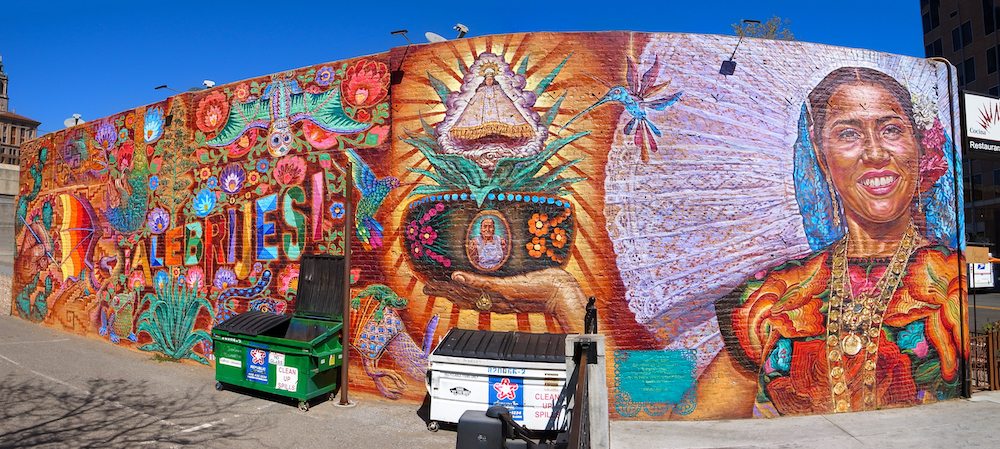Alebrijes Mural

Photographer: Hunter Ridenour (2022)
Artist: Francisco Franco (@francolafresh)
Year: 2019
Commissioned by: Mezcal Restaurant San José
Aesthetics of Public Art
By Daniel Katra, Art 174, Fall 2021
The title of this work is an homage to the brightly-colored genre of Mexican folk art, originating from fever-induced dreams of Mexican artist Pedro Linares, in the early 20th-century, a central feature of the imagery contained in the mural. Franco works with a deep sense of responsibility to his traditional Mexican artistic roots, while focusing on giving back to the community through his mural work.
The restaurant, Mezcal, where the mural calls home, is named after a traditional spirit of southern Mexico, based on the fermented and aged sap of the maguey cactus. Many sacred aspects of indigenous culture are represented in this mural, connecting the building itself to a rich history which originated in Mexico, but is still alive and well, taking on new form and significance in San José today. Representing the mystical qualities of the mezcal is a 15-foot tall Nuestra Señora Immaculada de Juquila, patron goddess of the maguey plant.
The deity is depicted growing out of a bowl of black clay pottery which has its own place in the spiritual lore of the Oaxacan region. The famous black mole, which is the signature dish at the restaurant, is represented in the mural as well, visually representing in a way a secret code, one that is shared by the Zapotec people, embedded in their collective DNA, that is made manifest through their artistic and culinary traditions. This rich imagery speaks the story of the various indigineous groups from these regions in southern Mexico that live in San José, along with the owners and workers of the restaurant Mezcal.
(concludes Daniel's essay)
Public Art as Resistance
“Alebrijes” demonstrates the maintaining and celebrating of identity in response to pressures to assimilate. The retention of identity solidifies the connection to Oaxaca forming a bridge to San Jose infusing it with the Zapotec culture broadening its prism of diversity. “Alebrijes” is a visual reminder of the vibrancy of Indigenous life in the modern world, that it is not something of the past. That the Zapotec are not referred to as were – of the past – rather they are – present and living in full view. The worldview of the Zapotec portrayed through the mixing of the spiritual, traditional dress and crafts open the eyes of the unfamiliar to living and thriving people who are more than a curiosity and culinary genre.
Continue Your Walk
Continue your walk north by winding through the commercial buildings toward the next mural.
Additional Resources
- “Time Lapse of Francisco Franco Studios Mezcal mural” Assisted by Steven Reece 2019 (video)
- Francisco Franco Studios, Details of the mural on Instagram @francolafresh (March 2020).
- “Getting to Know the San Francisco Artist Francisco Franco”